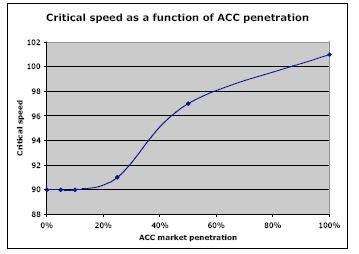
The objective of this research is to combine microscopic traffic simulation and driving simulator pilot tests of vehicles equipped with Advanced Cruise Control (ACC) systems, aiming to identify traffic and safety impact of the introduction of this technology. The relevant outputs of two microscopic traffic simulation and driving simulator experiments were analysed and the similarities between their experimental designs were identified. Relevant outputs were cross-tabulated and analysed, and qualitative results were extracted. Indicators selected for the purposes of this research include average speed, minimum and desired headways, and Time-To-Collision (TTC). The analysis indicates that the impact of ACC on the average speed is minimal, while headways and time-to-collision distributions are decreased. While these findings indicate positive traffic impacts, shorter headways and TTC values could have negative safety implications. Our findings have resulted in conclusions for the future development of ACC systems but also illustrated the usefulness for extracting a more complete assessment through the combination of traffic simulation results with respective results from driving simulators.
| ID | pc43 |
| Presentation | |
| Full Text | |
| Tags | driving simulator, intelligent systems, traffic management |






